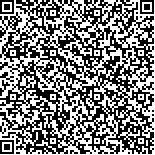下载中心
优秀审稿专家
优秀论文
相关链接
摘要

水资源监测是水资源管理的基础和支撑。随着中国最严格水资源管理制度的实施,从水量、水质、用水效率3方面的水资源管理开始向精细化和动态化管理转变。水资源要素具有时空变异大、通量变化快等特点,单独依靠地面监测手段难以开展大范围动态高效监测。目前中国水资源监测体系的建设,总体上以地面监测为主,还不具备水资源精细化和动态化管理需求的监测能力。随着卫星遥感等数据资源的不断丰富和陆面同化系统的不断发展,建立地面观测、卫星遥感和陆面同化系统三位一体的立体监测体系,探讨不同监测方式、多要素的协同监测机理、水资源监测要素的组织机制,对提升中国水资源监控能力具有参考价值。
Water resources monitoring is the foundation of water resources management. China is implementing the strictest water resources management system toward precise and dynamic management in terms of water quantity, water quality, and water use efficiency, with higher requirements for water resources monitoring. Water resources components are characterized by large spatial and temporal differences. Currently, the water resources monitoring system is based mainly on ground monitoring. However, it is difficult to carry out large-scale and long-term monitoring based solely on ground measurements. There are still knowledge gaps in the fine and dynamic water resources management. With continuous and rapid increases in satellite data, this paper examines the use of multi-mission satellite data, ground observation systems, and land data assimilation systems to jointly develop a stereoscopic monitoring system, which would be of value to address the monitoring gaps for water cycle components and to enhance the monitoring capability of water resources in China, with important implications for stereoscopic water resources monitoring for other countries and regions globally.

